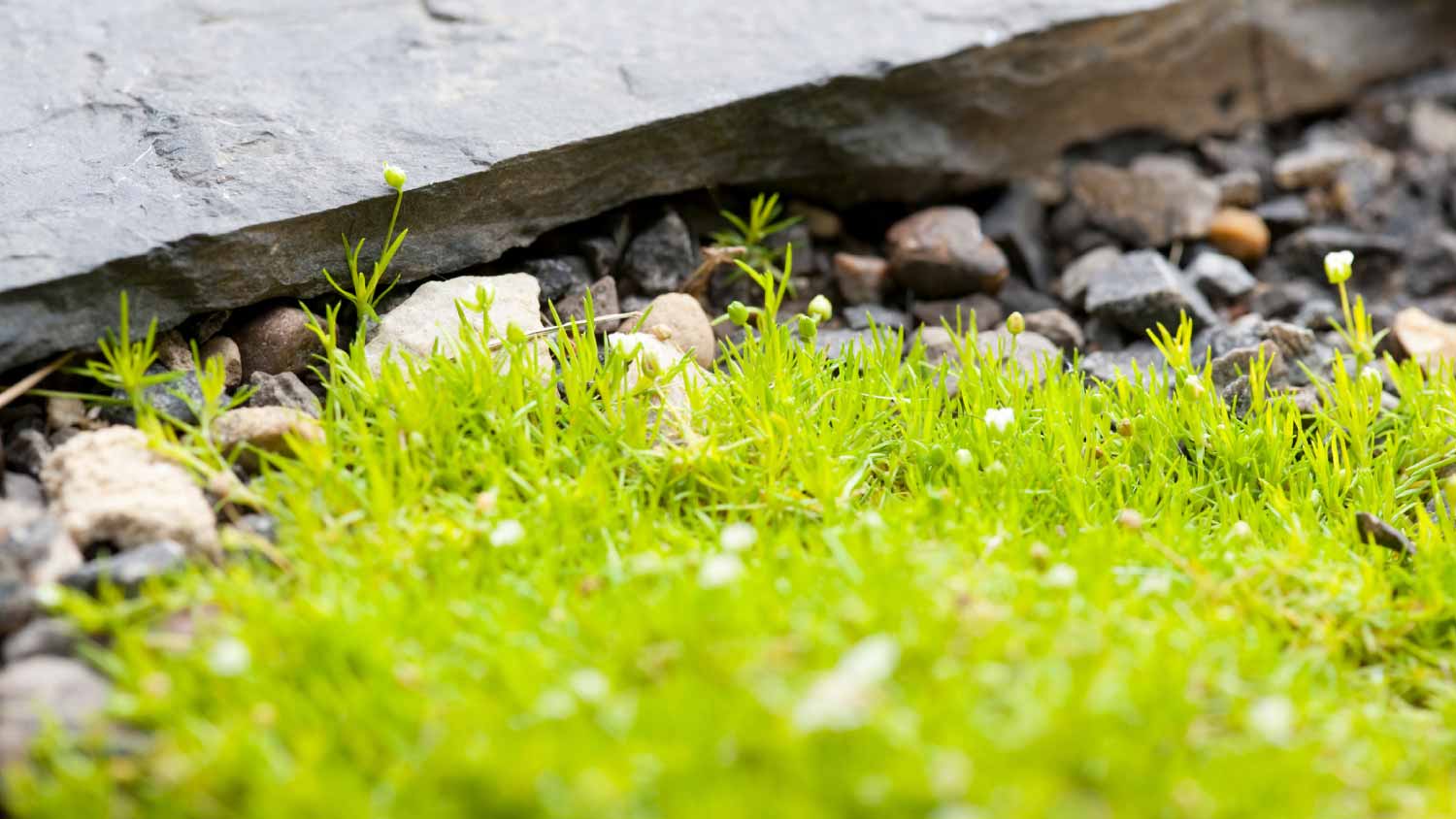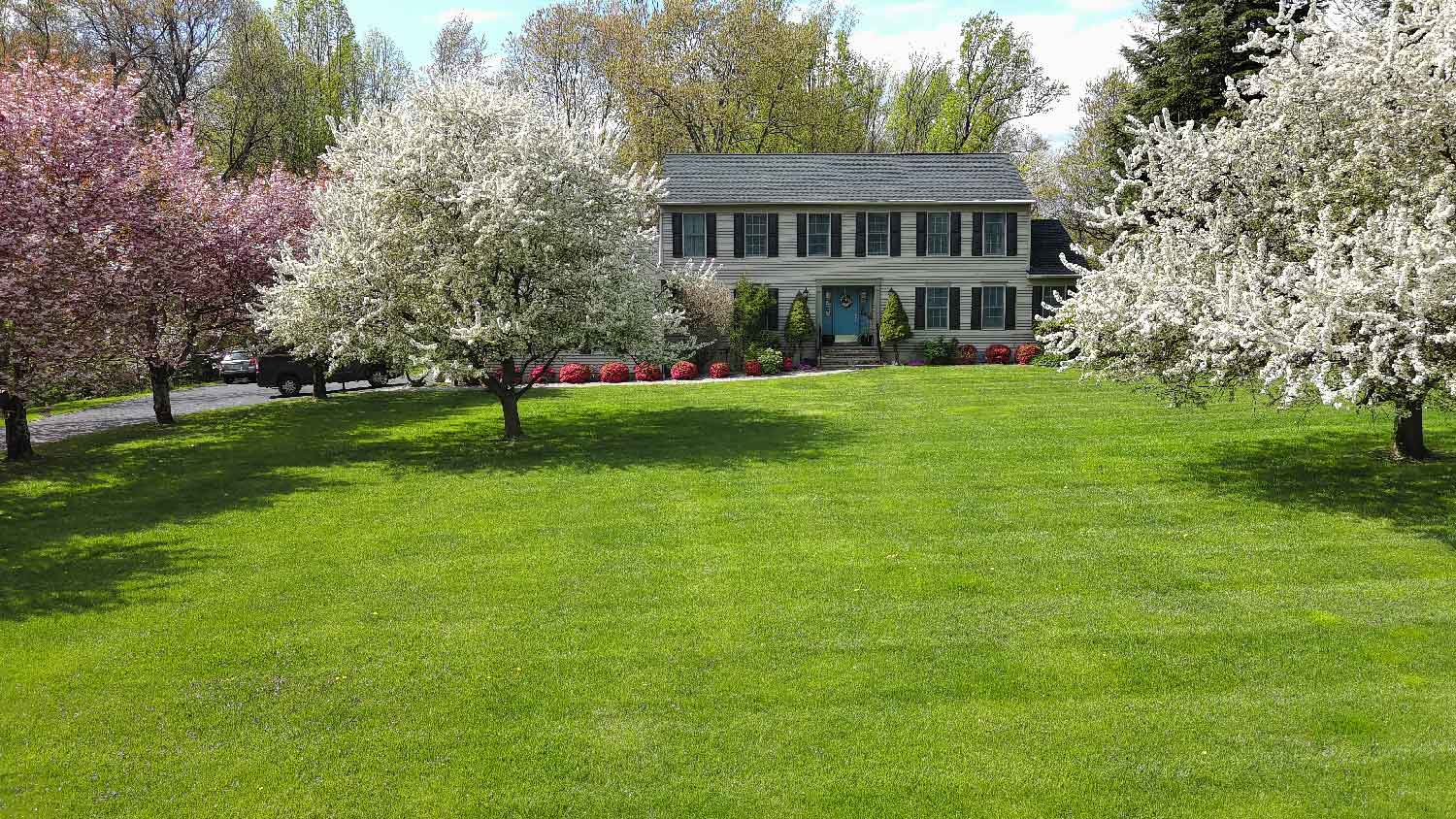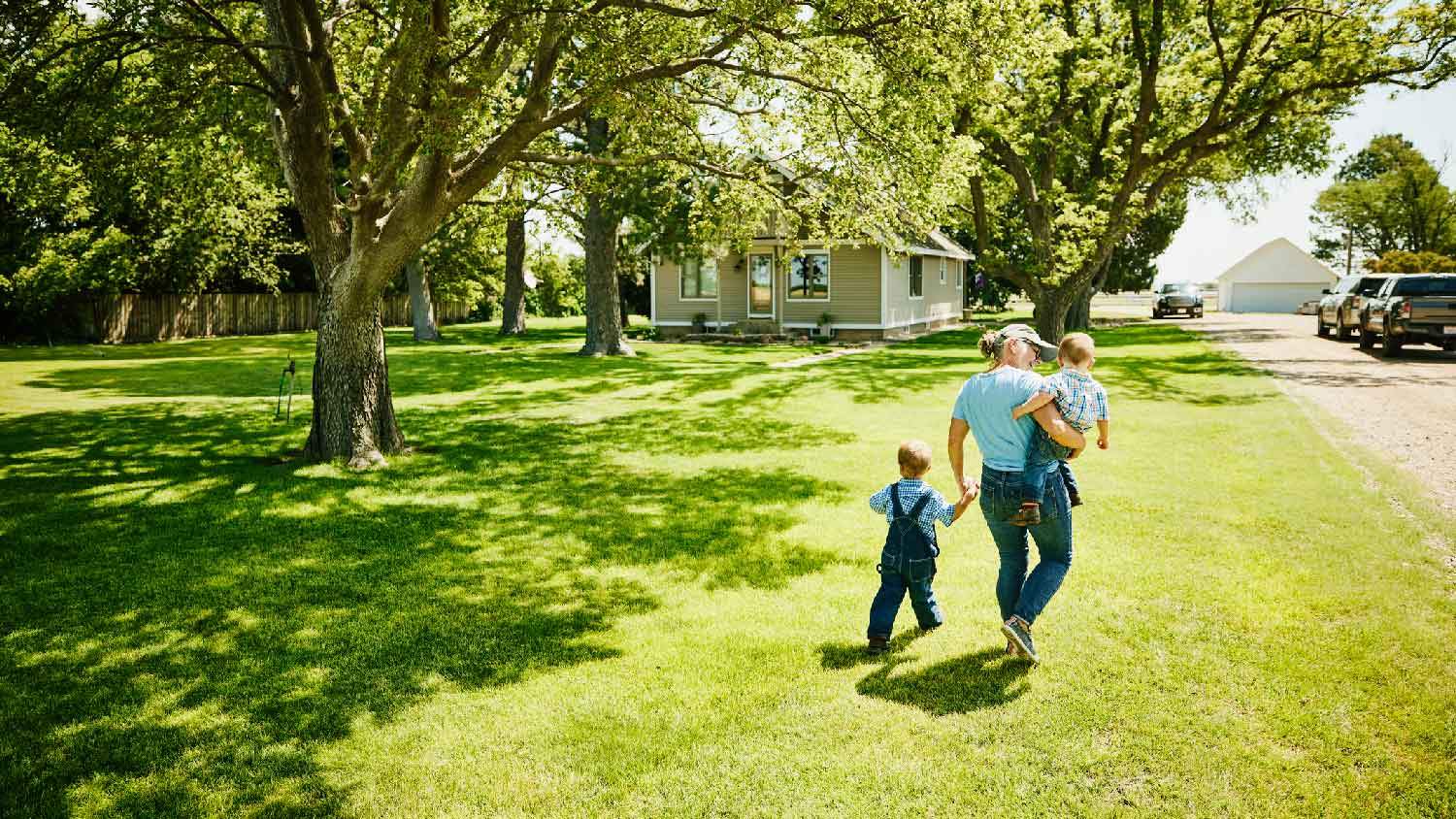How Do You Plant Grass on Hard Dirt?
A little love will go a long way and help green grass flourish on your lawn


- Rototiller
- Fertilizer dispenser
- Soil aeration tool
- Hose
- Safety glasses
- Fertilizer
- Dispenser
- Topsoil
- Chicken wire for compost pile (optional)
Hard dirt makes any kind of growth difficult, and trying to chisel your way through it can be discouraging without a proper plan in place. Learning how to plant grass on hard dirt requires loosening up and moisturizing damaged soil, as well as hiring a local lawn seeding service to tackle the project. In this guide, learn how to plant grass on hard dirt with these steps.
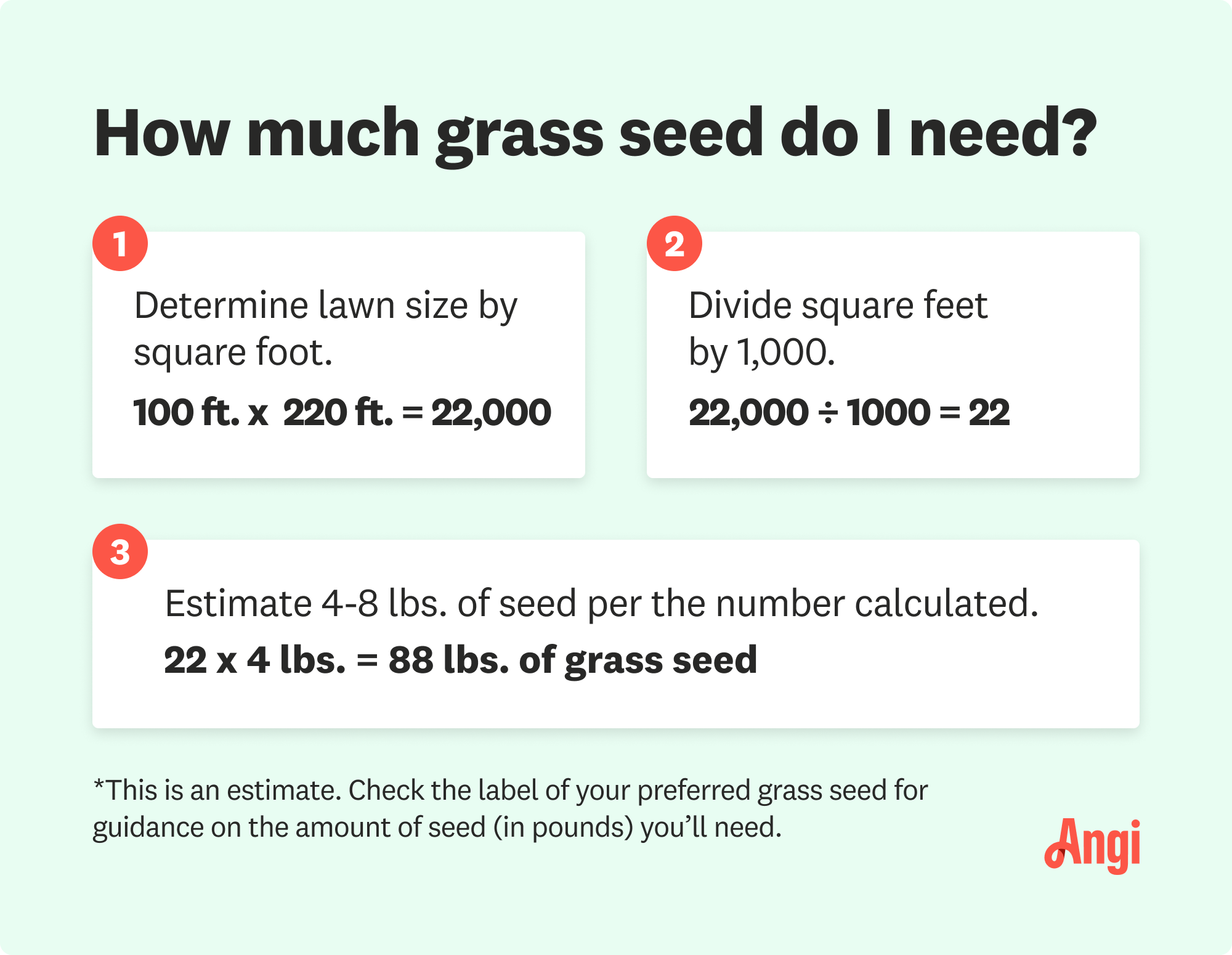
Collect Compost Before Planting Grass on Hard Dirt
 Photo: Capelle.r / Moment / Getty Images
Photo: Capelle.r / Moment / Getty ImagesAs part of a long-term strategy for planting grass on hard dirt, give your future soil a head start by creating a compost pile. Composting is a proven strategy for reducing soil erosion and also helps reduce waste.
Composted items can take up to two years to break down fully, but it'll reduce having to add topsoil every season. You'll save money by starting one using chicken wire and a shovel to set it up, which is pretty simple even on a limited budget. Making your own compost pile is also a great way to provide nutrients for the soil in your garden, which may help improve growth and harvest yields.
Get a Soil Test
 Photo: CHOOCHOO-ca-CHEW / Moment / Getty Images
Photo: CHOOCHOO-ca-CHEW / Moment / Getty ImagesFirst, conduct a soil test to figure out what's causing dirt to harden in the first place. The average cost for a lawn soil test is $60. They'll help you assess why your lawn has dead patches, hard and compacted sections, poor health, or difficult growth areas. For example, they might tell you what minerals your soil is deficient in or your pH level (a pH of 6 or 7 is ideal for growth).
Instead of sending your soil test away for results, a local soil testing company can give you information and tips at your home.
If your soil is especially acidic, over a 7 pH level, you can help your grass out by mixing in a fertilizer with your compost or your tiling steps. A sulfur-based fertilizer or starter fertilizer can help lower the pH, and so can the right compost.
Try a Moisture Test
Since low moisture can harden the soil and create many problems, it’s a good idea to check moisture levels and adjust your irrigation if necessary. If you have a watering schedule, wait until the ground is at a normal moisture level before testing.
One of the easiest ways to test is to take a screwdriver and try to push it into the soil. If you can readily dig the screwdriver in a few inches, your soil doesn’t have a moisture problem. If the screwdriver is difficult to push in, the soil is too dry and hard. You can try this test in different areas around your lawn to get a better idea of soil moisture and how well the soil retains water.
Choose the Right Time to Plant Grass
Give your grass the best chance of survival by choosing the right time to seed your soil after you’ve completed the essential prep steps. A cool-season grass like fescue or ryegrass grows best when planted in a cool season like fall. A warm-season grass, such as Zoysia or St. Augustine, thrives when planted in the warmer spring months.
Aerate Your Hard Soil
 Photo: Surfin_Rox / Adobe Stock
Photo: Surfin_Rox / Adobe StockSoil compaction is one of the leading reasons for hard dirt, making planting new grass difficult. When soil is compacted, grass roots can't penetrate deep into the earth, making growth more challenging, if not impossible. The solution is aeration: An important soil rejuvenation process.
Use an aeration tool or a rototiller to go over the hard areas, pressing firmly into the soil. For smaller patches, you can buy clip-on aeration boards for your shoes to walk across your lawn and help loosen up soil. For more advanced soil aeration in cases of extreme soil compact, it’s a good idea to arrange for core aeration, which uses larger equipment to remove entire plugs of soil from a matted, hardened lawn. An aeration tool costs around $30 at home improvement stores. Professional soil aeration costs between $75 and $200, depending on lawn size.
Use a Rototiller When Soil is Dry to Kick Up Nutrients
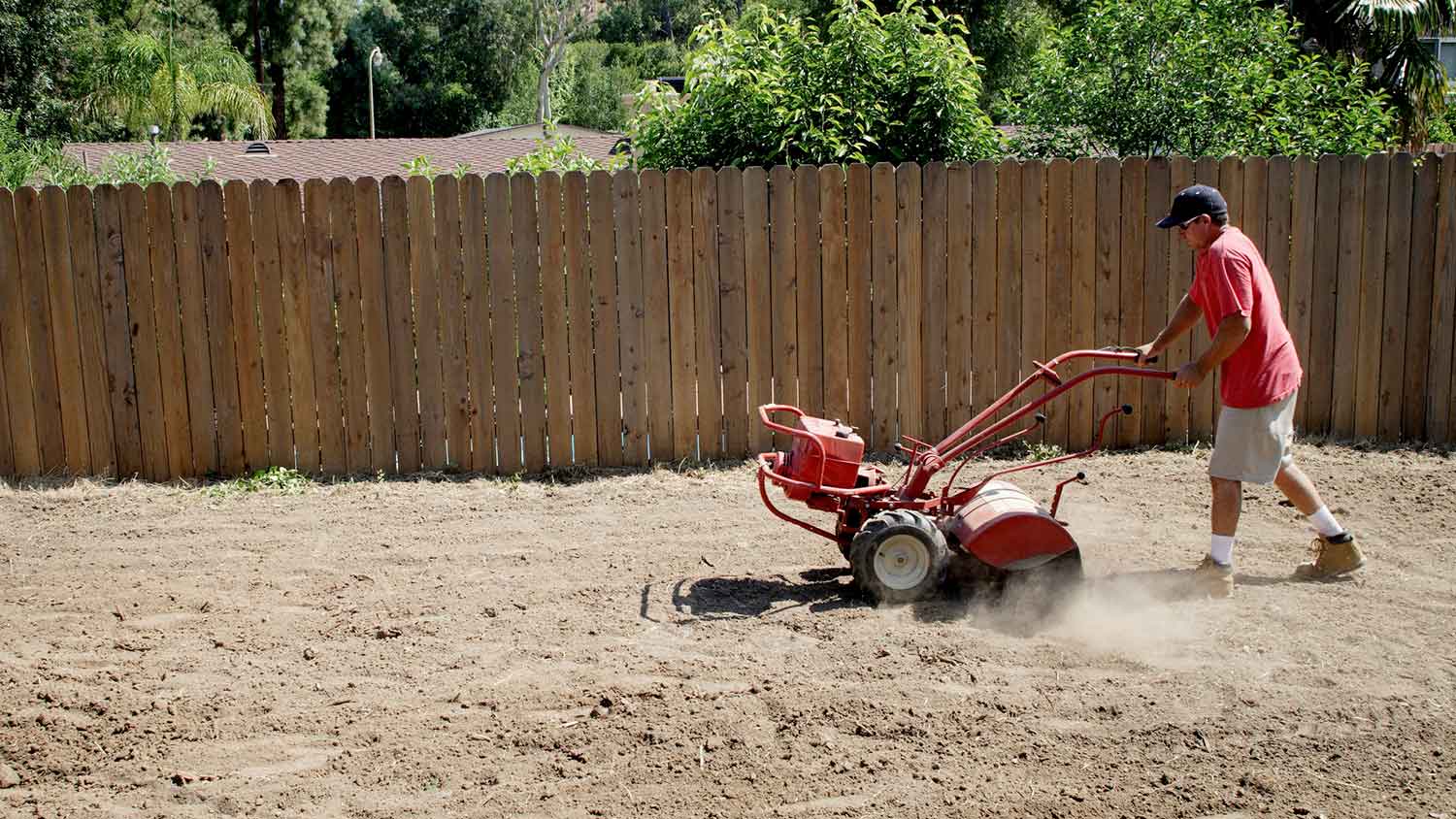 Photo: Shawn Frederick / UpperCut Images / Getty Images Plus / Getty Images
Photo: Shawn Frederick / UpperCut Images / Getty Images Plus / Getty ImagesGo over very compacted or hard areas with a motorized rototiller. Be sure to wear gloves and eye protection, and aim to dig six to twelve inches deep in the affected sections. This step helps turn up nutrient-dense, moist soil stuck beneath the hardest surface soil. Tilling your yard is best done in the early spring before you plant new grass.
Renting a motorized rototiller is the most affordable option at around $40 and $150 per day at home improvement stores.
Add Topsoil to Problem Spots
 Photo: Avalon_Studio / iStock / Getty Images Plus / Getty Images
Photo: Avalon_Studio / iStock / Getty Images Plus / Getty ImagesBuy topsoil at a local home improvement store, then use a shovel or hand-sprinkle it over your recently tilled or aerated sections. Adding topsoil is a great way to help keep dirt loose and prevent future compaction. Dark, moist, and full of nutrients, it's known for its ability to revitalize dry or damaged soils.
The one drawback is that topsoil is pretty expensive. Homeowners on a budget may compromise by adding topsoil to only the hardest areas of their yard. Topsoil costs between $12 to $55 per cubic yard.
Plant New Grass Seed
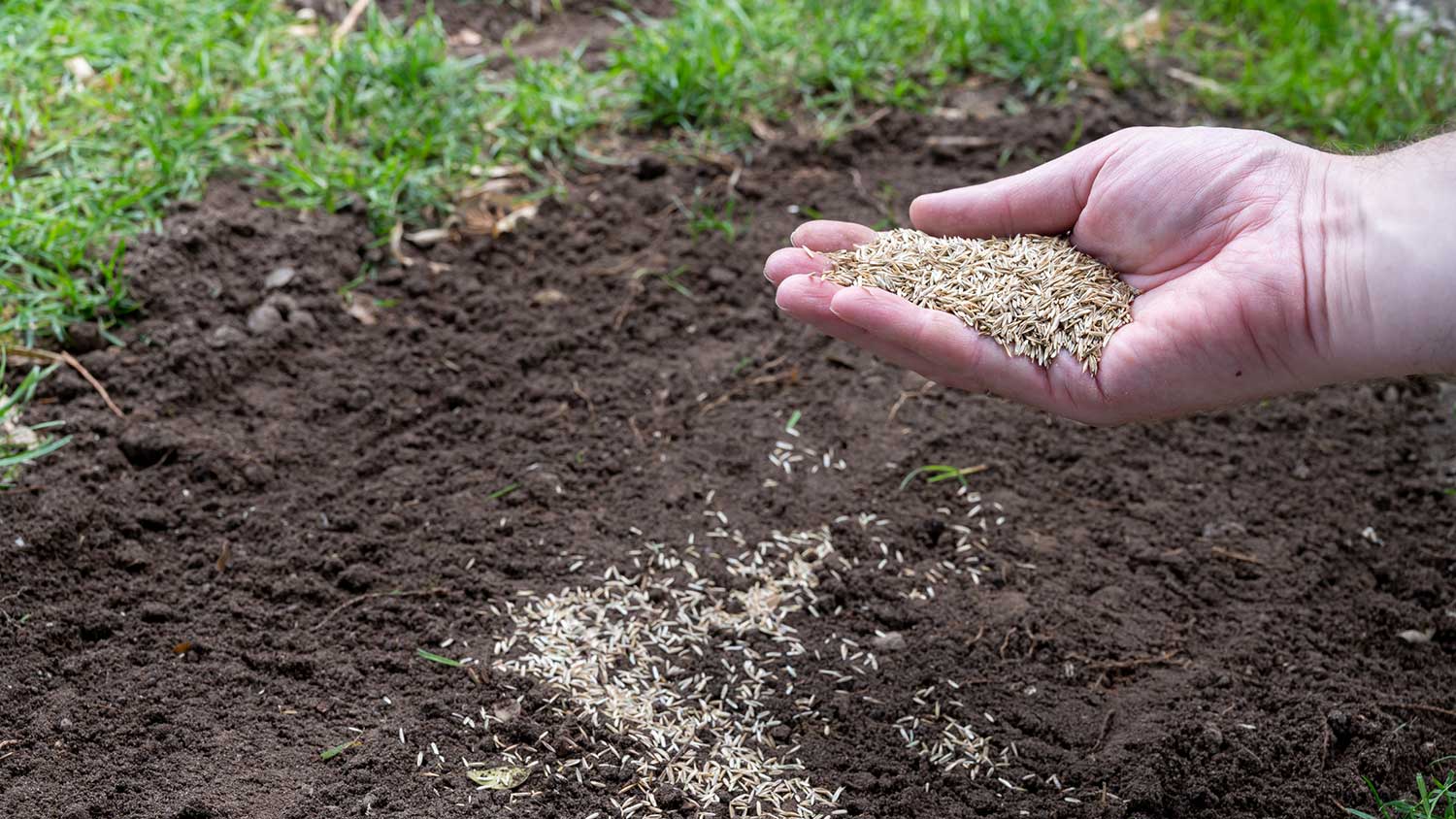 Photo: Fokusiert / iStock / Getty Images Plus / Getty Images
Photo: Fokusiert / iStock / Getty Images Plus / Getty ImagesManually spread grass seed with your hands on top of your topsoil, or use a grass seeder. Aim to plant new grass on hard dirt within a few days (if not hours) of aerating and rolling your soil over with a tiller. This step will give it the best chance of seeding and growing.
Areas with lots of clay soil (most likely in the southern American states) are most prone to reverting to their drier characteristics without proper planning. Be strategic about your plan for planting grass on hard dirt. You're better off planting when it's still a little cooler than waiting for hot summer weather, for example. Early spring is the ideal time in most climates.
Professionally seeding a lawn starts at around $440, but you can cut costs by buying your own seed and renting a grass seeder for a DIY project. However, properly preparing the soil for a seeding project is key.
Regularly Water Your Yard
 Photo: taniche / iStock / Getty Images Plus / Getty Images
Photo: taniche / iStock / Getty Images Plus / Getty ImagesWater your grass seed every day for the first few weeks for ten minutes each time. You can do this process with a sprinkler or watering can. After that, watering your grass three to four times per week (more if it's hot or not particularly rainy where you live) is highly recommended to maintain moisture in the soil and promote grass growth.
The aeration should promote better drainage, so you can add slightly more water than usual at first. Just don't overdo it; there should never be puddles.
Fertilize Your Grass to Help Keep Dirt Soft
 Photo: Robin Gentry / EyeEm / Getty Images
Photo: Robin Gentry / EyeEm / Getty ImagesGoing forward, add fertilizer to your lawn at least four times per season. You can complete this step with a seed spreader or by hand. Fertilizer keeps soil nutrient-dense. When your soil has access to nutrients like phosphorus, potassium, and nitrogen, it stays healthier and allows for grass to flourish more naturally. Maintain the grass you've grown—and prevent hard dirt from returning—by keeping your soil fed and healthy.
I contacted a landscaping team for a lawn estimate due to bare and dying grass patches. They arrived promptly, assessed the damage, and provided a competitive quote. The team started early, power raking the front yard in three passes, aerating, and overseeding the entire yard. They cleaned up thoroughly, leaving only hay to protect new seedlings. A month later, my yard looks lush and green.
Supreme Landscaping
Meriden, Connecticut
DIY vs. Hiring a Pro
While it’s possible to DIY planting grass on hard or compacted dirt, it’s a difficult and labor-intensive process. To ensure high-quality results, it’s best to hire a local lawn seeding service to evaluate your soil, determine a seeding plan, and implement it effectively. Since hard dirt is a tricky soil to plant in, you’ll likely need the help of a professional to grow green, healthy grass. Seeding your lawn with professional help costs between $440 and $1,750.
Why Do You Have Hard Dirt?
Hard, compacted dirt is a poor foundation for lawns (and gardens, flowers, or shrubs), but how does it happen? Several situations can cause hard, unyielding soil, including:
Vehicles: Driving repeatedly over the ground will compact growing lawns. Even a small car weighs enough to create serious pressure on the soil, especially if it drives over the lawn frequently.
Foot traffic: While foot traffic is not as impactful on grass as vehicles, a path that people frequently walk will grow compacted over time.
Bad weather: Harsh seasons can dry soil out and harden it over time. When there’s a lack of moisture and the soil compacts, it shows a telltale cracked pattern.
Lots of runoff: Erosion and runoff from rain can remove the top layer of soil, leaving the hardened soil pan beneath where it’s more difficult to grow plants.
Clay-heavy soil: Lots of clay makes it easy for soils to harden, especially when combined with other causes. Property owners who try adding sand to the soil to loosen it often find they created a concrete-like mix instead.
Poor watering: When lawns don’t get enough water, they grow short, matted roots that often contribute to hardened soils.
Frequently Asked Questions
One of the best ways to soften your grass and prepare it for planting grass seed is aeration. Aerating your lawn will loosen up compacted soil and facilitate a more even balance of nutrients from root to topsoil. We recommend using core aeration methods for the most effective soil-loosening results.
While it may seem easier and faster to throw grass seed onto dirt and call it a day, that method likely won’t yield great results. Preparing your lawn for reseeding or seeding by clearing rocks and debris, aerating, removing existing grass, or leveling it. You should also plan out the best time to plant your grass based on its type and your location to ensure it grows well. So, if you want your grass to grow successfully, put more time and effort into the project than throwing seed on the ground.
Some grass types grow better than others on hard dirt. For example, hardy grass types like perennial ryegrass and Kentucky bluegrass will grow better on tough soil. Keep in mind that you should still consider your area’s climate when deciding on a grass type.
The amount of time it takes for grass to germinate varies depending on the grass species. Even after germination, it’s going to take a while to see grass blades start emerging from soil. Some grasses germinate quickly and emerge after several days of growth (and healthy watering). Others may take up to three weeks to show themselves. Cool-season grasses tend to take the longest to germinate at one month.
Soaking grass seeds in water before seeding is called pre-germinating. It’s not necessary but can be very helpful in some cases. Some grasses like are very slow to germinate, and basic seeding on the ground is unlikely to be effective—that’s especially true of cool season grasses like Kentucky bluegrass, rye grasses, and Bermuda grass. Soaking these seeds in a bag or bin of water for one to four days beforehand can give the grass the start it needs to survive.



